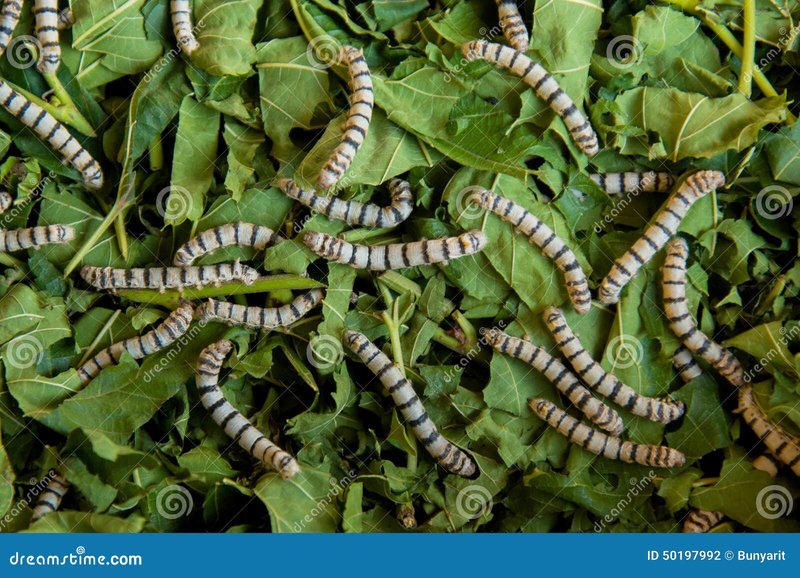
Raising silkworms can be a delightful hands-on experience that enriches school curriculums. It’s like nurturing a seed that grows into a plant, except in this case, the seed is a little worm! If you’re looking for a project that combines science with creativity and a touch of entrepreneurship, silkworm rearing can fit the bill perfectly.
What Are Silkworms and Why Raise Them?
Silkworms, or *Bombyx mori*, are the larvae of the silk moth. These worms are famous for producing silk, which is spun into threads and used in textiles. You might be wondering how a tiny creature can create something so luxurious. Well, as silkworms mature, they spin cocoons made of silk fibers—it’s like crafting their very own sleeping bag!
Raising silkworms in a school setting goes beyond just watching them grow. It’s an opportunity for students to learn about *life cycles*, *nutrition*, and how organisms interact with their environment. Plus, silkworm rearing can spark conversations about sustainability and the economic impact of the silk industry.
Honestly, it’s quite fascinating to see the lifecycle of silkworms, which includes the egg, larva (or caterpillar), pupa (in a cocoon), and finally, the adult moth. Each stage provides students with lessons in biology that are both visual and tactile. Imagine the excitement as they observe the transformation right before their eyes!
Getting Started with Silkworm Rearing
If you’re thinking about this project, the first step is to gather materials. Here’s what you’ll need:
- Silkworm eggs: These can be ordered from online vendors or local suppliers.
- Food: Silkworms feed primarily on mulberry leaves, which can be fresh or dried.
- Habitat: A simple container like a plastic bin or a glass jar works great to house the silkworms.
- Temperature control: Silkworms thrive in temperatures between 70°F and 80°F.
Once you have everything set up, you can begin by hatching the eggs. This typically takes about 10 days, depending on the temperature. Ensure the habitat is clean and provides enough oxygen for the tiny worms. As they grow, which they do quickly, regular feeding is necessary to keep them healthy and happy.
The Lifecycle of Silkworms
Understanding the lifecycle of silkworms is crucial for a successful rearing project. It unfolds in several fascinating stages:
1. **Egg Stage:** After about 10 days, the eggs hatch into tiny larvae. At this stage, they’re just a few millimeters long!
2. **Larval Stage:** Silkworms spend most of their life in this stage, growing rapidly as they munch on mulberry leaves. They molt multiple times—up to five times—before reaching full size.
3. **Pupal Stage:** Once the larvae reach maturity (around 25 to 30 days old), they spin cocoons and enter the pupal stage. This is when they’re encased in silk, and it can last about two weeks.
4. **Adult Moth Stage:** Finally, the adult moth emerges from the cocoon, signaling the completion of the lifecycle.
You might find it surprising how quickly these little creatures grow and change. This hands-on observation can lead to deep discussions about metamorphosis, growth, and the importance of nurturing living things.
Benefits of Silkworm Rearing for Students
Raising silkworms isn’t just fun; it comes with numerous benefits:
– **Hands-On Learning:** Students engage in a practical experience, making science come alive. They learn about biology and ecology in a way that textbooks can’t match.
– **Responsibility and Care:** Taking care of living creatures teaches students responsibility. They learn to monitor the conditions and respond to the silkworms’ needs.
– **Teamwork:** Students can work in groups, allowing them to collaborate and share tasks, enhancing their communication and teamwork skills.
– **Understanding Economics:** If students choose to sell silk or silk products, they gain insights into business concepts, marketing, and even financial management.
Imagine the pride students feel when they harvest silk or create products from it. It’s a tangible result of their hard work and a fantastic conversation starter!
Challenges of Silkworm Rearing
Like any project, silkworm rearing comes with its challenges. It’s essential to be prepared for a few bumps along the road:
– **Disease and Pests:** Silkworms can be susceptible to various pests and diseases. Keeping their environment clean and monitoring their health is crucial.
– **Temperature Fluctuations:** Maintaining the right temperature is vital. If conditions aren’t optimal, it can affect growth and health.
– **Availability of Food:** Fresh mulberry leaves can be hard to find year-round. It’s essential to plan for food sources, including dried options.
By discussing these challenges beforehand, students can learn problem-solving skills and how to adapt when things don’t go as planned.
Project Ideas Related to Silkworms
Once you’ve got the basics down, why not expand on the project with some creative ideas?
– **Create a Journal:** Students can keep a journal documenting the lifecycle of their silkworms, noting observations, measurements, and any interesting behaviors.
– **Silk Products:** Explore making items from the silk, like bookmarks, keychains, or even art projects. This can tie in lessons about crafts and commerce.
– **Science Fair Presentation:** Use the project as a basis for a science fair exhibit. Students can present what they learned and even showcase the silk they produced.
These activities not only add depth to the project but also make learning dynamic and multi-faceted.
Wrapping Up: The Last Word on Silkworm Rearing
Silkworm rearing as a school agriculture project is not just a unique idea; it’s a gateway for students to immerse themselves in biology, economics, and environmental stewardship. With each step of the process—from hatching eggs to harvesting silk—students develop skills that will serve them well in various areas of life.
So whether you’re an educator seeking innovative ways to enrich your curriculum or a student eager to embark on a hands-on adventure, consider silkworm rearing. You’ll find that watching these tiny creatures grow can spark curiosity and inspire a love for learning. Plus, you’ll have an unforgettable story to tell about your silkworms—and isn’t that what school projects are really about?

